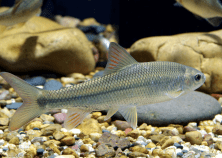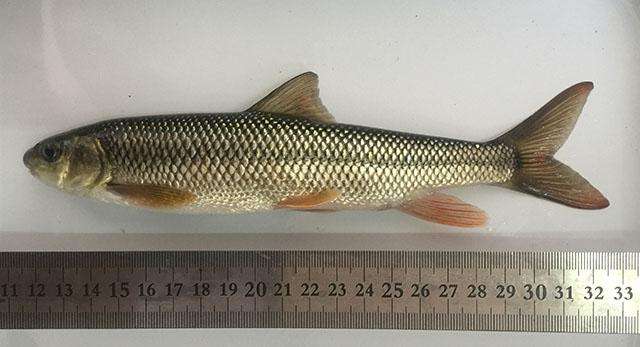
Alias Scaphesthes macrolepis,Largescale shoveljaw fish,Money fish, white-armored fish, red-scaled fish, multi-scaled shovel-jawed fish, multi-scaled proboscis fish
Family Cypriniformes Cyprinidae Leuciscus
Life No verification information
The Latin name of the multi-scale white snapper is Scaphesthes macrolepis, and the foreign name is Largescale shoveljaw fish, with no subspecies.

The multi-scale white snapper is a warm-temperate freshwater fish. It lives in high mountain streams with clear water and sandy and gravelly bottom at an altitude of 270-1500 meters. It has a narrow distribution range. For example, the Taishan population can be found in all the water flows from the main peak of Taishan, but it is not found below 270 meters above sea level. There is a saying that "it is not beyond Mata in the east and not beyond Matao in the west" (Mata and Matao are both names of local villages). It often hibernates in springs in mountain lava cracks and caves. After October, it hibernates in springs and emerges in mid-April of the following year. The time of emergence is mostly concentrated in the second half of the night. When emerging from the spring, it heads down and tails outward, and emerges in groups. It usually leaves the hibernation place within 8-10 days. The growth rate is slow, especially after 10 years old. The survival water temperature is 4-26℃. It will be frozen to death when it is lower than 2℃ and will be killed by heat when it is higher than 28℃. The optimal water temperature for growth and reproduction is 18-24℃.
The multi-scaled white-armored fish is omnivorous, mainly feeding on aquatic insects with thin body walls (such as larvae or adults of chironomids, larvae or cocoons of black-lined caddis silkworms, nymphs of white-striped mayflies, larvae of caddis silkworms, black ants) and other invertebrates, and also feeds on algae (such as spiral water spirals and short-haired green moss). When feeding on algae on the surface of gravel, it first shovels with its lower jaw, then turns its body over and puts the bait into its mouth.
Male fish reach sexual maturity at the age of 3 and female fish at the age of 4, with a carrying capacity of 6,000 to 12,000 eggs, and is a one-time spawning type, with the spawning period from late April to late July. It lays eggs in streams with gravel bottoms. The first eggs are plump and free, orange-yellow or light yellow, and hatch on the gravel.
Listed in the "Red List of Threatened Species of the World Conservation Union" (IUCN 2007 ver 3.1) - Least Concern (LC).
Listed in the "China Biodiversity Red List - Vertebrate Volume" (Inland Fish) - Vulnerable (VU).
Listed in the "Second Class Protected Animals in Beijing, China".
Listed in the second class of the "National Key Protected Wildlife List" of China in 2021 (only for wild populations).
Protect wild animals and stop eating game.
Maintaining ecological balance is everyone's responsibility!